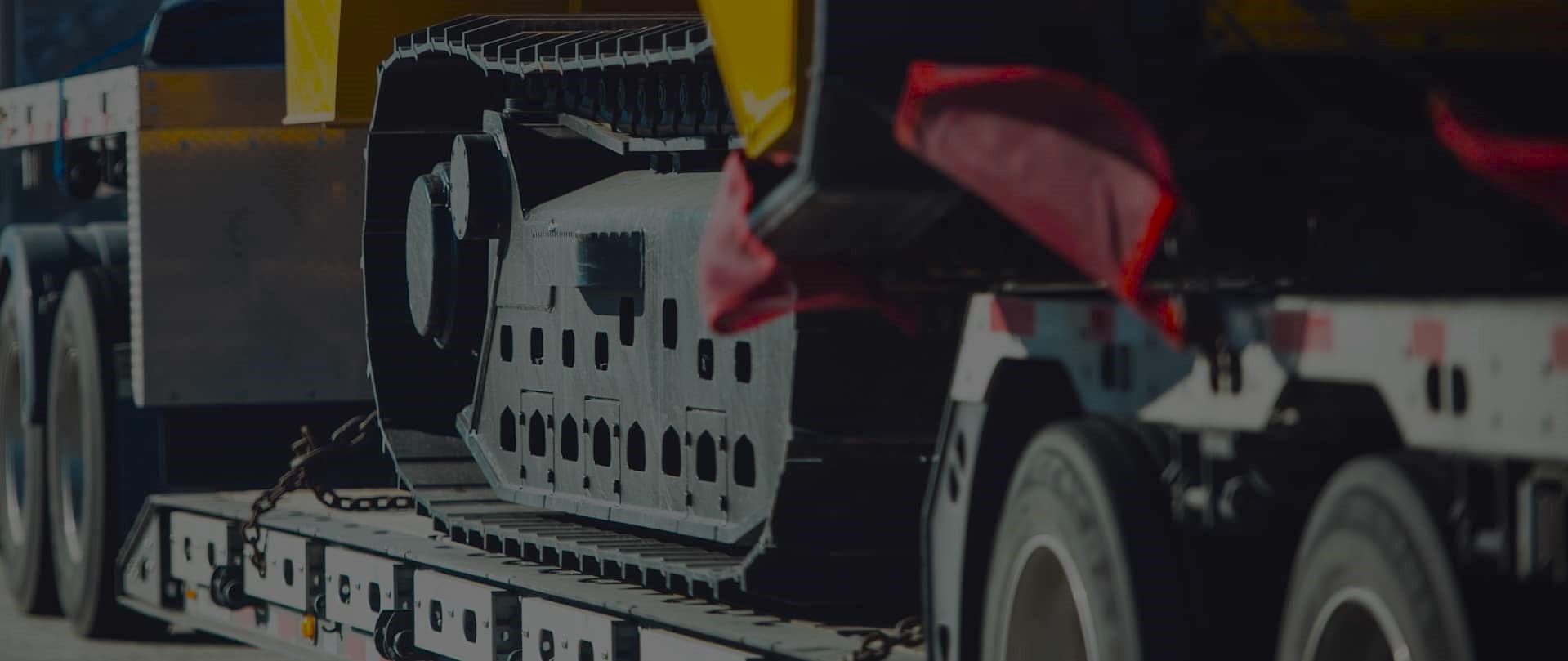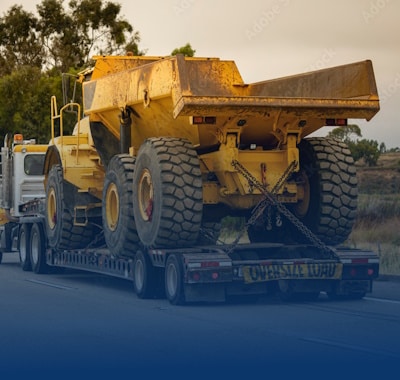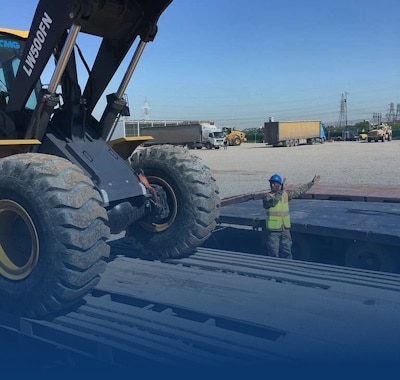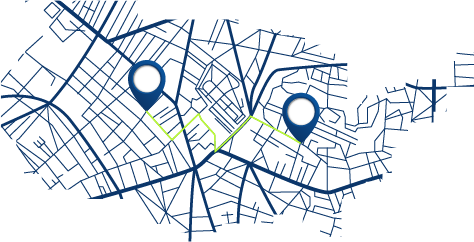Oversize Carriers Impacted by West Coast Seismic Retrofits
Freedom Heavy Haul can offer expedited Pickup and Delivery for any size shipment anywhere in the USA. Contact us today for No Hassle, No Pressure Pricing.
Today, specialized trucking firms face a living infrastructure challenge across California and nearby areas. Insurance markets now track earthquake liabilities closely as premiums rise, and insurers may limit coverage for older multiunit buildings. That shifts route planning, staging and insurance exposure for fleets that move large loads.
The region’s transportation system depends on aging bridges and overpasses that are in active upgrade programs. Lane shifts, rolling closures and altered approach paths change clearances and timing for heavy loads. These works are part of an ongoing state effort to reduce earthquake risk, not a one-off fix.
At the same time, retrofit schedules intersect with permit windows, staging space and insurance math. Typical earthquake deductibles run high, while many retrofit investments are relatively small and can cut liability. This article previews practical steps for carriers to coordinate with agencies, protect crew hours and keep customer commitments during a major infrastructure cycle.
Why West Coast seismic retrofits matter for the transportation system today
Major upgrade programs now target critical highway links that freight moves through daily. These projects focus on nodes where large loads funnel, merge, or cross. That makes them high-impact for route managers and dispatch teams.
From bridges to freeways:
From bridges to freeways: where upgrades intersect with wide routes
Programs concentrate on bridges, overcrossings, and interchange work—the exact pinch points for heavy moves. When a structure enters staged construction, nearby ramps and lanes shift. Escorts, queue times, and permitted night windows change quickly.
Major earthquake risk and what it means for state-level logistics planning
Warnings that the region is overdue for a major earthquake have pushed insurers and owners to reassess exposure. Earthquake deductibles can be near 20% of replacement cost, while many upgrades average 0.3% of that value. That math drives more projects and influences project timing.
“Treat retrofit calendars like any other capacity driver: integrate construction bulletins into dispatch and ETA planning.”
- Risk modeling and insurance signals speed up public works on key bridges and arteries.
- High-clearance structures and sign bridges are being re-evaluated for performance and clearance.
- State planning now assumes periodic closures and lane shifts on strategic corridors, so dynamic routing tools matter.
How West Coast seismic retrofits affect oversize carriers
Major lane shifts and active work zones force route teams to update plan sheets and scout approaches more often. Historic moves like the A‑12/YF‑12 convoys needed police escorts, pilot cars, and temporary sign removals—today’s projects demand the same precision.
Work zones narrow shoulders and alter ramp angles. That changes turning radii and may require steerable axles or different trailer decks. Even small tapers can invalidate a prior survey, so re‑checks matter before dispatch.
Work zones, lane shifts, and staged closures that reshape approach and egress
Staged closures break a route into short windows. Carriers must sync escorts, utility crews, and construction teams to pass safely. Night and weekend construction compresses available days and can force moves into fewer shifts.
Steel, structures, and bridge phases that constrain height, width, and weight
Temporary steel shoring, bracing, or falsework often reduces clearance. Confirm high‑pole readings and bridge deck condition ahead of time. When crews add new steel, a route open one week may be barred the next.
Days vs. windows: scheduling moves around night and weekend construction
Freeways under construction sometimes detour loads onto surface streets with tighter geometry. That increases pilot car needs and spotter support at choke points. Plan alternative approaches—backing into access points or staging in industrial lots—to handle limited egress.
“Treat construction calendars like any other capacity driver: integrate bulletins into dispatch and ETA planning.”
- Update move sheets with construction notes and torque checks for steerable dollies.
- Confirm temporary barrier placement and any interim covers that reduce overhead clearance.
- Re-survey routes after lane shifts; small changes can have large consequences for heavy moves.
| Constraint | Typical effect | Practical check | Mitigation |
|---|---|---|---|
| Lane shifts / narrow shoulders | Reduced turning radius; tighter tapers | On‑site approach re‑survey | Use steerable axles; add pilot cars |
| Temporary steel / falsework | Lower vertical & lateral clearances | High‑pole verification; bridge deck report | Change trailer deck; remove street furniture |
| Night/weekend windows | Fewer available days; compressed staging | Confirm construction schedule | Coordinate crews; reserve industrial staging |
| Detours to arterials | Tighter geometry; more escorts | Spotter plan for choke points | Pre‑position pilot cars; revise ETA |
Permitting and routing under seismic construction: lessons from historic and modern superloads
Successful permits begin with hands-on route checks and clear contacts at every district office. From the 1960s A‑12 moves to recent museum and aircraft tows, teams relied on high poles, pilot cars, and police escorts to prove clearances and secure windows.
Route surveys, high poles, and pilot cars
Route surveys, high poles, and pilot cars: practices pioneered in California
Measure actual clearance with survey poles before you set a date. The A‑12 convoy and modern WCS projects used this method to validate planned heights against reality.
Document each pass in a log so drivers, dispatch, and permit staff share the same facts.
Coordinating with district, city, and state authorities
Start with the district-level office to learn construction constraints, then align with city and state contacts to lock permissible windows. Get staging diagrams and traffic control plans early.
Police escorts and temporary removals to protect property and safety
Police escorts reduce risk on narrow bridges and in lane shifts. Plan sign and pole removals with utilities and cities, and confirm who takes indemnity and traffic control responsibility in writing.
“Treat the permit folder as the single source of truth for permits, escorts, removals, and jurisdiction contacts.”
- Keep a consolidated table of permits, escort names, and contact numbers accessible to field teams.
- Run a hands-on pre-run with high poles when temporary supports or scaffolding may narrow the path.
- Document lessons after each move to speed approvals in future projects over the years.
| Check | Why it matters | Who signs off |
|---|---|---|
| High-pole survey | Real clearance vs. plan | District engineer |
| Staging diagram | Anticipate squeeze points | City traffic |
| Escort plan | Protect crews and public | Local police |
Risk, downtime, and cost: balancing insurance and retrofit realities for carriers and shippers
When infrastructure work cuts access or height, every hour and dollar on a move can change fast. Insurers often set earthquake deductibles near 20% of replacement cost, while many targeted upgrades run about 0.3%—a stark contrast in upfront versus post-event exposure.
Insurance vs. capital choices:
Insurance deductibles versus retrofit investments on facilities along the route
Paying a large deductible after a loss can dwarf modest improvements to customer docks or staging yards. Small retrofits may reduce property damage risk, boost insurability for older buildings, and increase tenant appeal.
Translating delays into dollars: detention, diversion, and alternative corridors
Lane closures and detours add detention, extra miles, fuel, overtime, and escort fees. Those items convert into real cost and cut margins.
- Share joint risk models with shippers that include construction variability, not only post-event scenarios.
- Evaluate laydown areas and temporary storage for damage exposure and resilience.
- Build diversion cost scenarios including pilot car and police availability, and tie clear change-order triggers into contracts.
“Investing in mitigation can be both a resilience step and an insurance negotiation lever.”
Corridor spotlights: Los Angeles, the Bay Bridge, and San Francisco impacts
Urban moves in southern California and the Bay Area show why route teams must map every street and span. Local projects and staged work change available windows and usable lanes, so planning starts with hands-on surveys and confirmed permits.
Los Angeles and Southern California freeways: work zones on key arteries
In los angeles expect rolling work zones on major highways and arterials. Use the LACMA 340-ton rock move as a playbook: pre-arranged sign removals, police escorts, and pilot cars made the route possible after years of planning and coordination.
Long runs like historic road train moves require multi-jurisdiction clearances. Pre-clear adjacent states and lock contingency alternates before you roll.
Bay Bridge and SF access: structure constraints, staging, and alternative approaches
Near the bay bridge, staging is tight and inspections are strict. Temporary barriers, scaffolds, and lane shifts can cut vertical and lateral clearance at toll plazas and transition spans.
In san francisco combine port, freeway, and city-street segments carefully. Align night windows with municipal rules, validate bridge deck condition, and pre-position escorts at choke points.
“Treat corridor spotlights as live checklists: survey, permit, and stage before you schedule.”
- Plan surface-street alternates where bridge work narrows turning envelopes.
- Validate decks and interim steel that may lower clearance near spans.
- Build a dynamic project matrix to avoid stacking moves the same night near critical bridges.
| Corridor | Main challenge | Action | Example |
|---|---|---|---|
| Los Angeles | Rolling work zones; tight urban turns | Pre-arrange removals; police escorts | LACMA 340-ton move |
| Bay Bridge approaches | Tight staging; temporary steel | High-pole surveys; confirm toll-span clearance | Transition span inspections |
| San Francisco | Mixed port/freeway/street segments | Align night windows; reserve laydown near waterfront | SFO specialized towing permits |
Planning the next decade of moves: practical steps carriers can take today
A decade-long playbook turns scattered project notes into predictable routing and staffing decisions. Map anticipated projects by district and state corridor, then align fleet, escorts, and vendors to those windows.
Standardize route surveys with a shared table of high-pole readings, clearance benchmarks, and bridge notes. Require updates after any construction phase change so your teams work from the same facts.
Formalize agency partnerships. Hold quarterly check-ins with district contacts, secure timing accommodations, and pre‑issue work orders for temporary removals on complex urban runs.
Adopt retrofit-aware pricing, invest in modular steel gear and steerable trailers, rehearse tight passes for safety, and run table-top exercises to refine alternate‑way plans and reduce cost and damage risks over the years.







